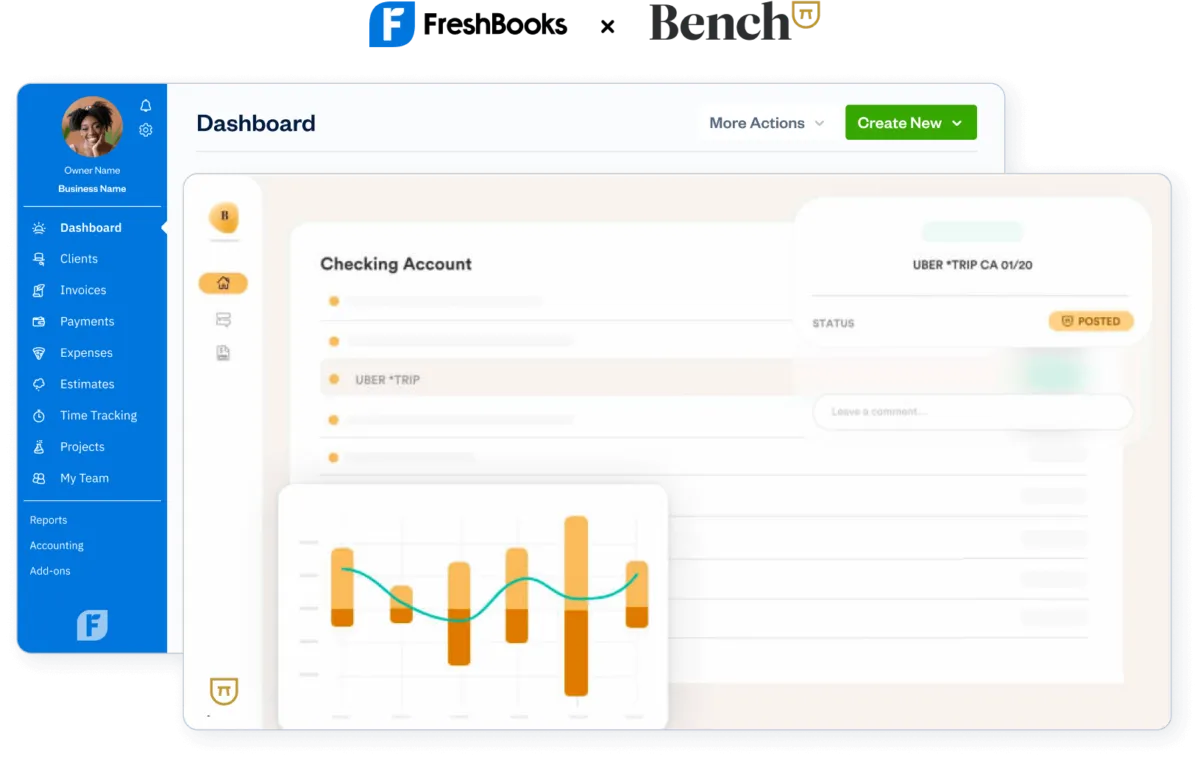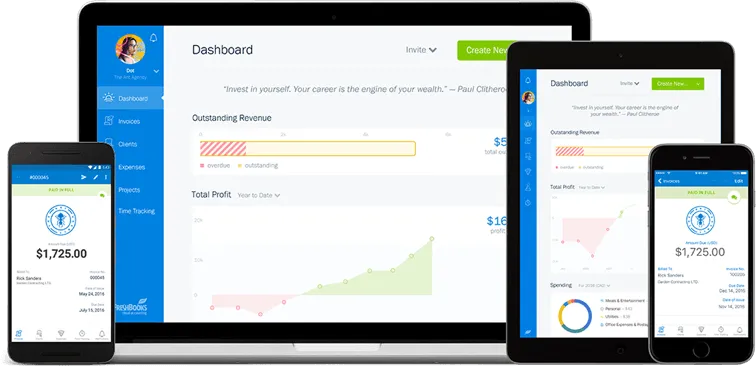Net Operating Loss (NOL): A Detailed Guide

A net operating loss (NOL) is what it is called when a business’ allowable deductions exceed its gross income in a tax year. Calculating the net operating loss for your business is as simple as subtracting your tax deductions from the taxable income for the year.
In the following article, we will discuss the definition of net operating loss, and you will learn when and how to calculate it for your own business.
Key Takeaways
- A net operating loss is a tax credit that occurs when the business tax deductions exceed its taxable income in a year.
- Businesses can carry forward their losses to future years to reduce or eliminate tax deductions.
- A business can carry forward its NOL indefinitely, with some limitations.
- Calculating the net operating losses is essential, as it can provide future tax relief for businesses.
What this article covers:
- What Is a Net Operating Loss?
- How to Calculate Net Operating Loss?
- What is Net Operating Loss Carryback or Carryforward
- How did TCJA Affect Net Operating Loss?
- How Long Can You Carry Forward Net Operating Losses?
- What Is a Net Operating Loss Deduction in Accounting?
- What Does It Mean to Operate at a Loss?
- What are the Limitations of Net Operating Loss?
- Can You Sell Net Operating Losses?
- Examples of Net Operating Loss
- What is the Difference Between Net Operating Loss and Net Income?
- Should New Businesses Keep a Negative Net Operating Loss?
- Conclusion
- Frequently Asked Questions

What Is a Net Operating Loss?
A net operating loss is a type of tax credit that occurs when the business tax deductions are higher than the taxable income in a year. This means the business does not owe the IRS any taxes and may be able to use the NOL deduction in the future.
The loss is carried forward to help reduce the business’s tax liability in future years.
This is one of the reasons using a professional bookkeeping service is beneficial when you own a small business.
Connecting your FreshBooks accounting software to virtual bookkeeping services like Bench is the easiest way to make the most out of your incoming and outgoing finances. Click here to learn more.

Is Net Operating Loss Bad?
An NOL is not always bad because a business can apply these losses to the income tax returns from future years to reduce tax liability. This is especially helpful if a business is just starting or has not been overly profitable. You can even carry the net operating losses forward indefinitely.
How to Calculate Net Operating Loss?
On a business expense sheet, the net operating loss is calculated by subtracting itemized deductions from adjusted gross taxable income. If the result is a negative number, you have net operating losses.
This is displayed on line 41 on Form 1040, U.S. Individual Income Tax Return.
The steps for calculating the net operating loss for corporations are as follows:
- Determine Eligibility
A net operating loss must be caused by certain deductions, like having a slow year with little profit, property damages, natural disasters, high business expenses, theft, moving costs, and rental property expenses.
NOL applies only to pass-through businesses, including sole proprietorships. Partnerships and S corporations cannot claim net operating losses. However, individual partners or owners can find out their share of the loss on their individual tax returns.
- Follow the Rules for Deductions
The use of net operating losses is subject to certain restrictions. The list of excluded items are:
- Deduction for personal exemptions
- The net operating loss deduction
- Deduction for domestic production activities
- Any net capital losses (when capital losses are more than capital gains)
- Nonbusiness deductions in excess of nonbusiness taxable income
- The Section 1202 exclusion of the gain from the sale or exchange of qualified small business stock
- Calculate the Net Operating Losses
The next step is to determine whether you have a net operating loss and its amount. For example, if your business has a taxable income of $700,000, tax deductions of $900,000 and a corporate tax rate of 40%, its NOL would be:
$700,000 – $900,000 = -$200,000.
Because the business does not have taxable income, it will not be paying any taxes for the tax year.
But let’s assume the business makes a profit next year and records a taxable income of $200,000. If it is taxed at the corporate tax rate, it will have to pay $200,000 x 40% = $80,000 in taxes.
Since the business incurred a net operating loss the previous year, it can be used to lower the current year’s tax bill significantly.
What is Net Operating Loss Carryback or Carryforward
The net operating loss used to be able to be carried back to the two tax years before the net operating loss year, but from 2020, it can no longer be applied against taxable income to get a tax refund.
Some cases, like a loss as a farmer, may allow for a carryback period. The remaining amount could then be used indefinitely with restrictions.
If you end up with multiple NOLs over the years, they have to be drawn down in the order in which they were created.
How did TCJA Affect Net Operating Loss?
The Tax Cuts and Jobs Act of 2017 created significant changes to net operating loss. These include:
- Limiting the NOL carryforward to 80% of each subsequent year’s net taxable income
- Lifting the previously imposed 20-year limitation on carryovers
- Disallowing NOL carrybacks completely for corporations
How Long Can You Carry Forward Net Operating Losses?
You can carry forward net operating losses indefinitely for tax reduction purposes, after which time it has no value. To carry forward the amount, you’ll need to include a statement with your tax return for the NOL year saying that you’re doing so.
What Is a Net Operating Loss Deduction in Accounting?
Net operating losses are classified as business assets because these losses reduce the amount of taxable income that has been earned that year. Under assets classification, the NOL losses are classified as deferred tax assets and presented under the noncurrent assets in the balance sheet.
Calculating the net operating losses is important because the IRS offers tax relief for businesses operating at a loss, especially for startups that have not started making money yet.
The idea behind it is that when the business makes money, it pays taxes, and when it doesn’t, it gets some relief. This is what makes the net operating loss a valuable asset.
What Does It Mean to Operate at a Loss?
When a business is operating at a loss, it means it is not bringing in enough money to cover its operating expenses. This can happen when the company’s total revenues are less than all other costs and expenses of running a business.
Costs may include overhead, operational expenses and cost of goods sold. The break-even point is when it brings in enough money to cover all these costs.
New businesses are most at risk of operating at a loss because they haven’t started making revenues yet. This is especially true for businesses that have a start-up phase. This can include services and online ventures. In these scenarios, the losses are carried forward to create future tax reliefs.
Businesses can use these deductions to save money and propel growth. They can use these savings to increase marketing budgets or purchase additional products for a lower cost basis.Your new business finances don’t need to be complicated. To keep close track of your expenses and profits and to make better-informed business decisions, you may wish to utilize accounting software like FreshBooks. Click here for a free trial or to get started on creating your own account.

What are the Limitations of Net Operating Loss?
NOL may be limited by taxable income, as there are caps on deductions. It can also only be used when there is taxable income and cannot be used to offset other business expenses or investment expenses.
Can You Sell Net Operating Losses?
No, net operating losses cannot be freely sold for cash, but in some cases, a business can benefit from transferring these losses. For example, if your company has net operating losses, you could sell a portion of your company to a third party in exchange for cash.
The IRS somewhat limits this process. Ownership changes of greater than 50% will significantly reduce the amount you are to deduct. This is known as a 382 limitation.
Examples of Net Operating Loss
Net operating loss is a common principle in accounting. Let’s look at some examples of NOL in action.
Example One
A business has $1 million in total sales and has deductions of $800,000. This results in a net income of $200,000. This number would then be used to calculate the final tax amount. Let’s say your business is taxed at 30%.
The final number would be $200,000 * 30% = $60,000.
Example Two
A business has $1 million in total sales, but it can’t claim any of the deductions. Let’s say your own business income is taxed at 30% again.
The final number would be $1 million * 30% = $300,000.
Example Three
Now let’s assume the business has fewer sales than deductions. Let’s say it has $800,000 in sales and $900,000 in deductions. This results in a final amount of -$100,000 or a net operating loss deduction of $100,000.
In this case, since it’s a negative number, your qualified business income would not be taxed on that amount, providing helpful tax savings that can be carried forward to a future year.
What is the Difference Between Net Operating Loss and Net Income?
Net operating loss and net income are two different numbers. Net operating loss is a business asset, reducing the company’s taxable income. Net income represents how much money has been generated by the business. It shows your sales minus all the expenses, including the operating costs and taxes paid.
To stay on top of your small business net income, you may wish to utilize an accounting template. This will give you an at-a-glance idea of your business profits and losses and let you know where you stand when tax time rolls around. Click here to try the FreshBooks free accounting template and see if it works for your business needs.
Should New Businesses Keep a Negative Net Operating Loss?
Many new businesses have a negative net operating loss for the first few years. It’s not ideal, but it is completely legal. The numbers are included in future taxable income calculations when you are filing your taxes.
Typically, the business will have an increased net income in future years that offsets this deduction. It can use this deduction in the future if it is profitable.
Businesses can employ a tax professional to help them use this deduction to their advantage. It may sound counterintuitive for a business to lose money year after year. However, by having a net operating loss, you can use it to offset your taxable income, reducing the amount owed.
This process benefits businesses with large amounts of debt or high costs of goods sold. If they have major expansion plans, this deduction may be used to reduce the tax liability.
This type of deduction allows new businesses to maximize their marketing budgets or other costs. These types of activities typically have a higher upfront cost. These then pay dividends down the road as the business expands.

Conclusion
Although net operating loss may, at first glance, seem like a negative, if you utilize your tax credits strategically, you may receive a refund of taxes that were paid previously or carry credits forward indefinitely with restrictions.
New businesses that require a start-up phase, like online ventures, run the most risk or operate at a loss in their first few years because they have not had the time to earn revenue.
Calculated NOL deductions can help a business to save money, which can be put into marketing or product development, thereby increasing the chances of long-term business success.
Using tax accounting software like FreshBooks can help you stay on top of your business expenses, make informed decisions, and ensure you carry forward the appropriate amounts on your taxes each year. Click here to learn more about FreshBooks tax accounting software and how working with a tax professional can help you maximize tax benefits for your small business.
FAQs on Net Operating Loss
Who can claim a net operating loss?
Businesses that have tax deductions in a year that are more than the taxable income for the year and are deemed eligible by the Internal Revenue Service (IRS), according to their specifications, may claim a net operating business loss for the tax year.
How do NOLs affect 3 statements?
Because NOLs affect whether you will be paying cash taxes for years in the future, The cash flow statement of the 3-statement model will be affected. Your DCF model estimates your company’s intrinsic value and will also be affected, as will metrics like unlevered free cash flow.
How many years can you claim a net operating loss?
For tax years beginning after 2020, you can claim and carry forward your net operating losses indefinitely, but deductions are limited to 80 percent of taxable income. Prior to 2020, you could carry forward NOLs for twenty years. Carrybacks are no longer allowed.
How does the 80% NOL limitation work?
You may have a net operating loss if your deductions for the year are more than the yearly income. This business loss can be carried forward indefinitely until all the loss has been recovered but is limited to 80% of the excess taxable income in any tax period.
Does NOL offset all income?
NOL is first used to offset the income in the NOL year. If it exceeds 80% of that year’s income, it can then be used to offset a company’s tax payments in future tax periods using an IRS tax provision called loss carryforward.
About the author
Kristen Slavin is a CPA with 16 years of experience, specializing in accounting, bookkeeping, and tax services for small businesses. A member of the CPA Association of BC, she also holds a Master’s Degree in Business Administration from Simon Fraser University. In her spare time, Kristen enjoys camping, hiking, and road tripping with her husband and two children. In 2022 Kristen founded K10 Accounting. The firm offers bookkeeping and accounting services for business and personal needs, as well as ERP consulting and audit assistance.
RELATED ARTICLES


 What Does Goodwill Mean in Accounting? The Essential Features
What Does Goodwill Mean in Accounting? The Essential Features What Can Be Depreciated in Business? Depreciation Decoded
What Can Be Depreciated in Business? Depreciation Decoded What Is Overhead Allocation for Small Businesses
What Is Overhead Allocation for Small Businesses Accounting Errors: What Is a Transposition Error
Accounting Errors: What Is a Transposition Error How Accounting Can Help Your Small Business Succeed | How-To Guide
How Accounting Can Help Your Small Business Succeed | How-To Guide What Is LIFO Method? Definition and Example
What Is LIFO Method? Definition and Example